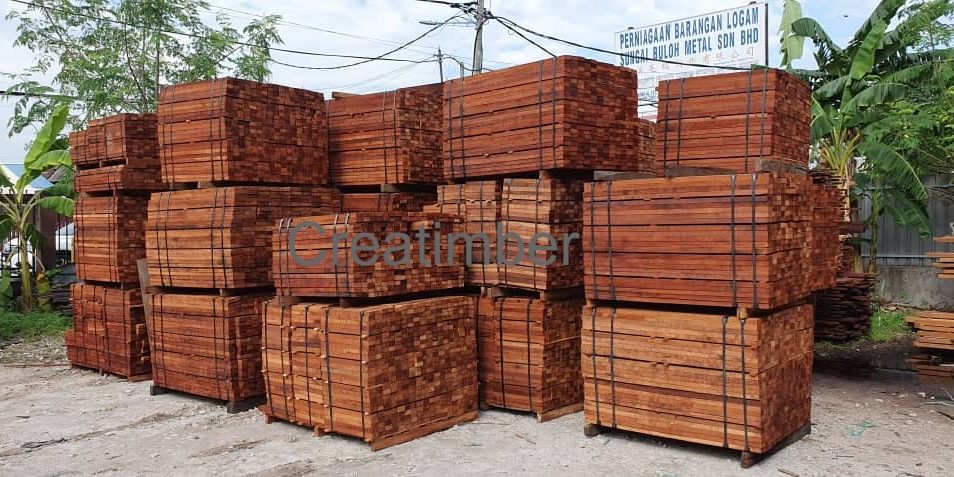Wood vs Metal: A Clash of Nature and Industrial Strength
When it comes to materials used in construction, furniture design, and everyday products, few can match the enduring appeal of wood and metal. Both have unique properties that make them essential in different fields, and both offer benefits that cannot be overlooked. While wood has been used by humans for centuries due to its natural charm and versatility, metal has become a cornerstone of modern industry, advancing technology and architectural feats. At Creatimber Global Sdn Bhd, we provide premium wood from Malaysia, catering to both traditional and contemporary needs. In this article, we delve into the unique qualities of wood and metal, comparing their durability, aesthetics, environmental impact, and practical applications.
1. Material Properties and Durability
Wood is prized for its natural texture, warmth, and stunning grain patterns. From the rich red hues of mahogany to the deep browns of oak, each type of wood offers its own visual charm. As an organic material, wood undergoes natural aging, which results in a unique patina over time. Hardwoods like teak and rosewood contain natural oils and resins that provide increased resistance to weathering, insects, and decay, making them perfect for outdoor applications and long-lasting furniture.
Despite its beauty and resilience, wood is susceptible to the elements. In humid or harsh conditions, it can warp, swell, or rot unless treated with preservatives and protective coatings like varnish or paint. However, compared to wood, metal offers superior strength and durability, especially in demanding environments. Metals such as steel and aluminum are corrosion-resistant, incredibly strong, and can withstand extreme temperatures and moisture, making them ideal for heavy-duty applications like structural frameworks, machinery, and tools. Metals generally perform better than wood in outdoor settings and remain stable for longer periods.
2. Malleability and Workability
One of wood’s greatest strengths is its ease of manipulation. Whether it’s shaping, sanding, carving, or finishing, wood can be worked with simple tools to create intricate and custom designs. The natural properties of wood make it the material of choice for skilled craftsmen who seek to infuse their creations with warmth and character. From traditional wooden furniture to modern decorative pieces, wood can be molded into virtually any form.
On the other hand, metal requires specialized tools and techniques, including welding, laser cutting, and milling. While metal is tough, it lacks the malleability of wood, and its hardness means it is harder to process without advanced equipment and technical expertise. That said, metal’s strength makes it indispensable for applications that demand structural integrity, such as in construction and transportation.
3. Environmental Impact and Sustainability
Wood is one of the most eco-friendly materials available. When harvested from well-managed forests, wood is a renewable resource that offers sustainability. Trees naturally absorb carbon dioxide, helping reduce the levels of greenhouse gases in the atmosphere, making wood a material that actively contributes to the fight against climate change. Additionally, wood is biodegradable and can be repurposed or recycled, reducing waste.
Metal, although recyclable, poses a higher environmental burden in its extraction, processing, and manufacturing stages. The mining, smelting, and refining of metals require significant energy and produce greenhouse gas emissions. Furthermore, some metals, such as lead or mercury, can be toxic to the environment if not properly handled. While recycling programs can mitigate some of these impacts, the long-term sustainability of wood remains a key advantage over metal in terms of environmental responsibility.
4. Applications: Where Each Material Excels
Wood and metal each have their own specific areas where they shine. In the construction industry, wood is widely used for interior décor, flooring, cabinetry, and furniture due to its aesthetic appeal and warm, natural look. It brings character and coziness to spaces, making it ideal for homes, offices, and even outdoor structures like pergolas and decking.
Metal, however, dominates when it comes to structural elements. Steel and aluminum are crucial in building strong, resilient frameworks for everything from skyscrapers to bridges, as well as in industries like aerospace and automotive manufacturing. Metal’s inherent strength makes it the go-to choice for load-bearing parts and external facades that require superior stability.
In the furniture industry, wood offers comfort and elegance with its organic look and feel. It is widely favored for classic designs and bespoke pieces, adding a timeless element to interior décor. In contrast, metal furniture tends to feature sleek, contemporary designs with a minimalist flair, offering a durable, modern alternative.
5. Conclusion
Both wood and metal are incredibly valuable materials that serve different but essential functions in construction, design, and industry. Wood is cherished for its natural beauty, versatility, and sustainability. With proper care, it can endure for generations, enriching environments with its warmth and character. Metal, on the other hand, is unmatched for its strength, durability, and resistance to environmental elements, making it indispensable for demanding applications.
At Creatimber Global Sdn Bhd, we offer high-quality wood sourced from the rich forests of Malaysia, providing wood that meets the highest standards of durability and aesthetics. Whether you’re building a home, crafting furniture, or designing a new product, understanding the strengths and uses of both wood and metal will help you make more informed decisions, ensuring your project stands the test of time.
By choosing the right material for the right purpose, you can ensure that your creations remain beautiful, functional, and environmentally friendly for many years to come.






